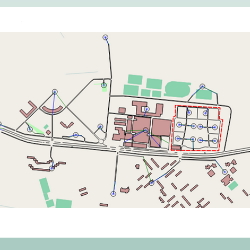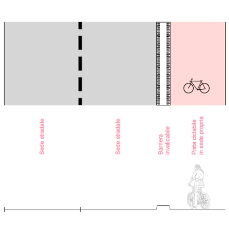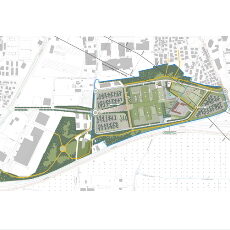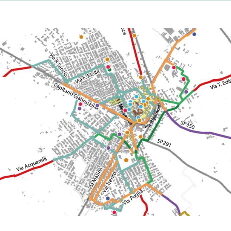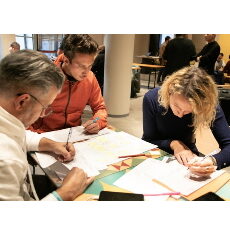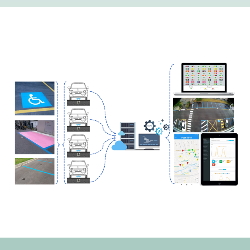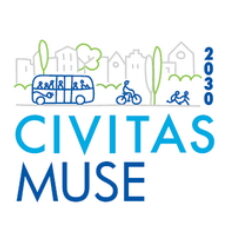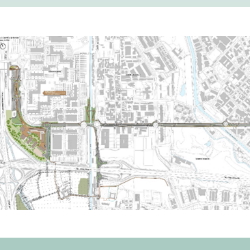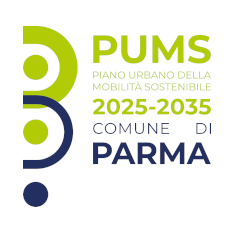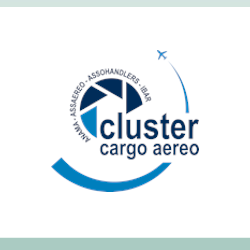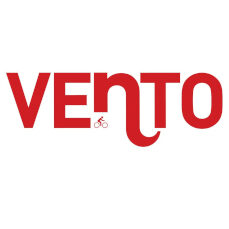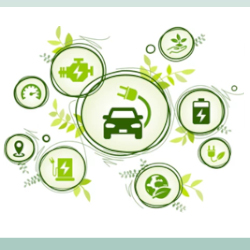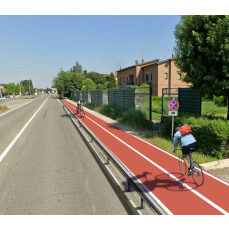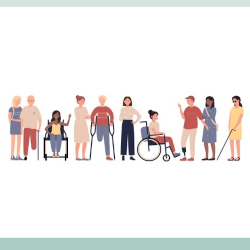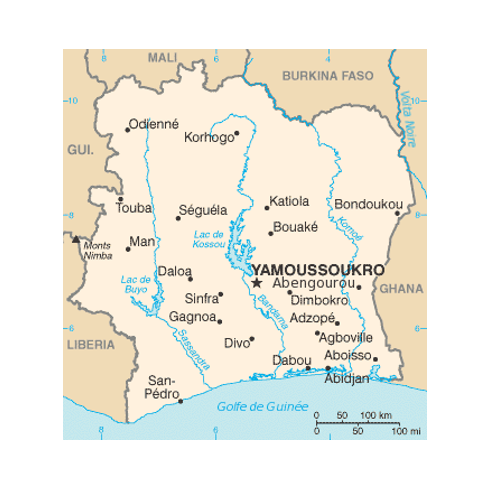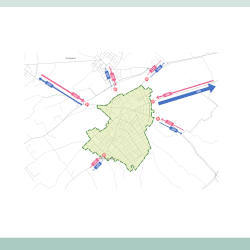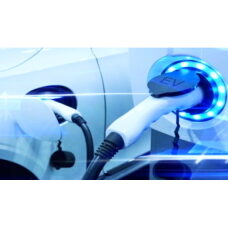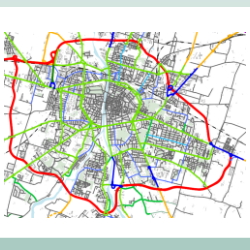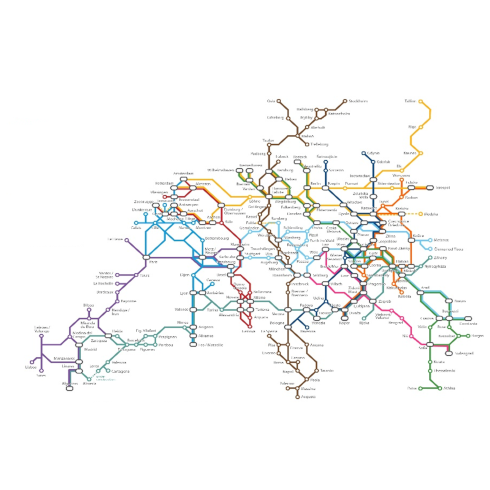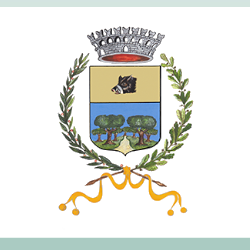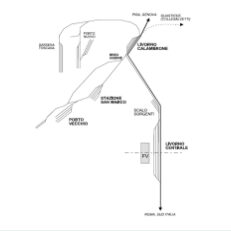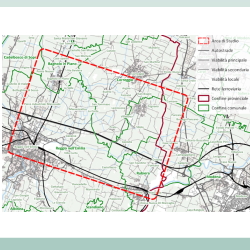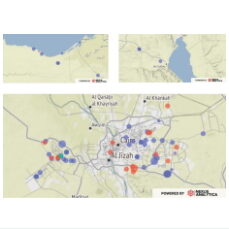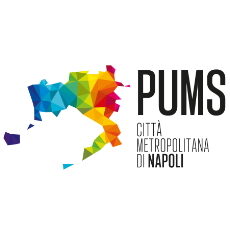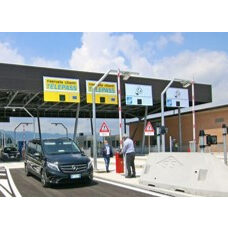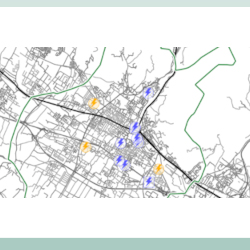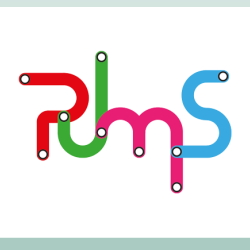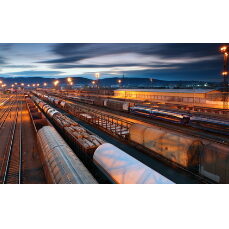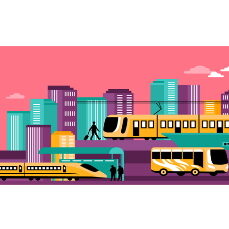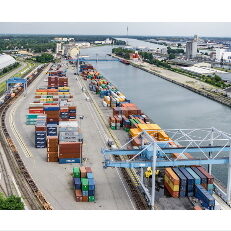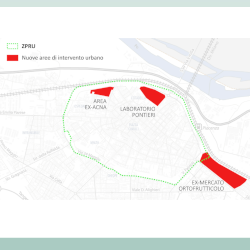- In-depth transport study of possible urban development related to ‘compartment c’ of the Unipol complex in via dei Missaglia TRT Trasporti e Territorio has been involved by UnipolSai for the technical and transport analysis concerning the feasibility of an independent access to serve the “Building C” area within the UnipolSai property along Via dei Missaglia in Milan. The study envisages the implementation of a dynamic traffic micro-simulation model in order to provide an assessment of the new road reorganisation within the Unipol complex. The simulations take into account the evolution of the occupancy of the buildings of the “Business Park” in the time horizon compatible with the development of the planned residential part. The analyses allow us to verify the impact of existing and future functions along Via dei Missaglia, the road system within the subdivision and at the main intersections.
- Cesena Sport City: network of cycling routes connecting sports areas in Cesena Following the victory in the design competition organized by the Municipality of Cesena in 2021, TRTIngegneria is developing a project for cycling connections as part of a broader activity to prepare the final and executive project, as well as safety coordination, aimed at the redevelopment of five sports areas. The project is named «Cesena Sport City». TRTIngegneria is working in partnership with Degli Esposti Architetti Srl (lead partner), CEAS Srl, various professional architects, engineers, and geologists (Elisa Cristiana Cattaneo, Angelo Bolzoni, Umberto Guerra, and Marcello Brugola), and benefits from the technical consultancy of GVG Engineering Srl. Specifically, TRTIngegneria’s activities involve defining and subsequently designing some cycling routes connecting the city center and the new sports hubs covered by the project. In the development of these activities, a methodology is adopted to emphasize and achieve: the construction of a cycling infrastructure based on the concept of a «city for diachronic sections», which means a timeline that can be traversed with slow mobility for daily commuting; strengthening the «Bicipolitana» and the «VeloCe» projects (as planned in the Cesena SUMP); weaving together internal molecular structures, redeveloping and enhancing existing routes, and implementing small actions through the construction of new sections that integrate existing elements; connecting with bike sharing and bike stop points in the project areas, creating small exchange hubs between motorists and cyclists. The use of roads as public spaces and the desire to establish a direct relationship between the city and the surrounding areas lead to proposing actions that aim to question and overturn the current car-pedestrian and car-cyclist hierarchy, reallocating space from parked cars to improve the usability of public spaces.
- New hospital in piacenza: transport study and cost-benefit analysis for the design of the feasibility study for the new location in area 5 TRT Trasporti e Territorio was commissioned by the Local Health Unit (AUSL) of Piacenza to provide technical support to the design group led by Policreo Srl, with the in-depth studies on the Transport Study and the Cost-Benefit Analysis developed within the Feasibility Study, (drawn up in accordance with art. 14 of Presidential Decree No. 207/2010), of the New Hospital of Piacenza related to area 5 (AL 9), located in the urban sector within the urban ring road, between Corso Europa and Strada Farnesiana. The study is divided into three main activities: the first is about the mobility and parking system related to the current hospital location, analysing in detail the system of roads, parking and public-private accessibility of the area. the second is about the functionality of the road infrastructures serving the new hospital in Piacenza, assessing the impact of the private mobility system, in terms of road infrastructures and the parking system; the third explores cost-benefit analysis issues, comparing the new project of the hospital with the option of maintaining and upgrading the existing hospital. The cost-benefit analysis estimates the project’s contribution to improving the social-economic well-being of the community, i.e. it estimates whether the social-economic advantages, or benefits, outweigh the disadvantages, or social costs. Related projects: Transport study and cost-benefit analysis of the new hospital in Piacenza
- Drafting of the Cycling Mobility Plan of the Municipality of Ugento (Salento), strategic vision to promote cycling for daily travel and for tourism The Municipal Administration of Ugento has entrusted “TRT Ingegneria” with the drafting of the Municipal Cycling Mobility Plan, after obtaining funding from the Puglia Region in 2021. The territory of Ugento is characterised by a strong vocation for tourism. This is due to the possibility of taking advantage of its numerous natural and environmental resources, including its marinas and parks, as well as the presence of a significant historical and cultural heritage. The primary public will for the area is to enhance and support the tourism system, and in this regard, cycling plays a particularly important role. Given the characteristics of the city of Ugento, the proposed bicycle network is developed by integrating the central urban area with the extensive network of existing suburban paths and white roads. This is done to define a complete active mobility network in the entire municipal territory that supports not only daily movements but also recreational and leisure trips. The Cycling Plan proposal considers as a starting point some references projects that involve the municipal territory at various levels. These are “La ciclovia dei Tre Mari”, the ongoing “Project for the construction of bicycle paths in the municipality of Ugento” and the proposal contained in the “Plan for the Ugento Litoral Regional Natural Park “. The plan elaboration was structured in two phases: The first phase, called “Cognitive framework and guidelines”, contains the analysis of the current state of cycling mobility in Ugento. It analyses the supply and demand of cycling routes and related services, as well as the social and environmental impacts. This document also contains the regulatory, planning and programming framework. The second phase, called “Drafting the Plan Document”, contains the definition of the objectives and strategies, as well as the description of the method used to identify priorities for action. The document presents the design of the cycle network, identifies services dedicated to cycling, and communication activities to encourage cycling. Finally, the document is completed by the investment cost estimation and the definition of the indicators for monitoring the planned actions. The Plan was adopted by the Municipal Council on 26.01.2023 and received the declaration of non-subjection to the Strategic Environmental Assessment (SEA) on 21.04.2023 by the competent Authority. On 05.07.2023, it was approved by the Municipal Council.
- TRT Academy – Professional training on cyclelogistics TRT Academy is born from the collaboration between TRT and EIT Urban Mobility. The Academy offers advanced training programs addressed to mobility and transport professionals to explore the specific issues required by the constant change of urban centres and related trips. In particular operators of the public and private sphere who intend to thrive the transition towards an increasingly sustainable mobility, understanding the economic, environmental and social aspects that this implies. The trainings combine theoretical learning, field visits and hands-on labs. The interdisciplinary group formed by TRT professionals offers the opportunity to comprehend processes and to strength skills through the application of practical cases and the meeting of guests from the sector also expanding the relationship and knowledge network. The training activity, initiated in the fall of 2022, has so far included four courses dedicated to cyclelogistics, a topic that has garnered the interest of numerous participants from logistics companies, administrations, service companies, and transport agencies. The courses aim to address the growing demand for sustainable and efficient last-mile logistics solutions. The challenges addressed include political, technical, knowledge-based, and trust-related aspects of the solution. With an interdisciplinary and innovative approach, the various editions of the course have offered different supply chain actors the opportunity to engage in discussions and identify elements to develop a shared public-private strategy. Following the success of the first edition held in Milan in November 2022, the course was offered again with specific focuses on the most current and relevant topics, in 2023 in Milan and Rome, and in June 2024 in Reggio Emilia. *This course was developed with the support of EIT Urban Mobility, an initiative of the European Union’s European Institute of Innovation and Technology (EIT). For more information: Bike Italia – Article Logistica Management – Article
- Evaluation of internal traffic access and parking in the areas of the major polyclinic hospital This study addresses issues related to the reorganisation and management of vehicles parking within the areas of the Ospedale Maggiore Policlinico in the city centre of Milan. The area, currently occupied by construction sites for the new buildings, is characterised by very limited parking spaces and it is affected by frequent phenomena of irregular parking that affect its proper and safe use for the various functions, particularly those related to emergencies. The study analyses in detail the current demand for mobility through: the administration of a questionnaire to employees concerning individual travel, analysis of vehicles and bicycle/pedestrian input/output flows from the area and an in-situ analysis campaign of the supply and demand for parking. Based on the solid reconstruction of the current state, innovative solutions were proposed with regard to parking management, through the implementation of an innovative access control and parking management system. This system is characterised by a high technological content based on the control of both access (through a number plate reading system) and individual parking spaces (through the installation of special sensors on the ground). The new system will be able to control both access and parking vehicles, allowing the automatic detection of any abuses in terms of access and parking. ]
- CIVITAS MUSE – Coordination and Support Action for the CIVITAS Initiative The scope of CIVITAS MUSE is to support the CIVITAS community to increase its impact on urban mobility policy making and advance it to a higher level of knowledge, exchange, impact and sustainability, while guaranteeing essential high-quality support. Their main objectives include: to act as a destination for knowledge developed by the CIVITAS Community over the past twenty years To expand and strengthen relationships between cities and stakeholders at all levels To support the enrichment of the wider urban mobility community by providing learning opportunities To represent CIVITAS on the international stage TRT is responsible of the activities related to projects monitoring and evaluation, as well as for the development of policy recommendations. More specifically, the key objectives of TRT work are: Monitor results and implementation activities across CIVITAS and urban mobility projects with reference to what is new and emerging from the CIVITAS Community on urban mobility innovations and policy making. Enhance, consolidate, and bring to the next level the substantial body of knowledge that has and is continuously being produced by urban mobility projects, to improve its accessibility to practitioners. Provide a common realistic, user-friendly and effective evaluation framework as the reference point for mobility measures and concepts, supporting projects in its implementation to harmonise evaluation activities. Provide focused policy support to the CIVITAS Community, informed by Policy Groups contributing to Green Deal objectives, elaborating policy building blocks and content for MUSE learning and communications. For more information, check the previous Coordination and Support Action for the CIVITAS Initiative, CIVITAS Elevate
- Modelling European cities’ pathways to zero-emission urban mobility by 2030 through the development of potential transition scenarios This study modelled European cities’ pathways to zero-emission urban mobility by 2030 through the development of potential transition scenarios. Each scenario is built on different set of sustainable policy measures, whose impacts is quantified through a series of indicators as output results. The assessment is realized through MOMOS a quantitative tool which allows to simulate and quantify in a simplified way the impacts of potential mobility transition scenarios in cities. Four potential scenarios, each one with a different focus and a specific combination of policy measures, have been simulated and applied to five real European cities: Brussels, Madrid, Milan, Greater Manchester, and Warsaw. An in-depth data collection defined and reproduced the city characteristics at the base year, including socio-demographic aspects as well as mobility features. The main output of the study consisted in the calculation of the CO2 emissions reduction associated to each scenario. Besides that, a series of core indicators have also been calculated for the 2030 horizon. These included: modal split, public and private fleet electrification, car ownership, road safety, and air pollutants emissions. In addition, multi-criteria cost effectiveness analysis estimated costs and benefits associated to the four transition scenarios. Such analysis was based on four components: (implementation and maintenance) costs of the policy measures, environmental benefits, users’ transport costs and travel time, and revenues for the public administration and service providers. For more information: Clean cities website on the (E)Mission zero study, including technical reports and factsheet results. Briefing of the (E)Mission zero study Interactive tool to explore results of the (E)Mission zero study
- Formazione e Capacity Building per i Piani di Mobilità Urbana Sostenibile (PUMS) nei Paesi dell’UE TRT, supported by a consortium of six companies (DTV Consultants, TREDIT, TIS, Stratec, Goudappel, and Eurocities), has been appointed by the European Investment Bank (EIB) to provide SUMP Training and Capacity Building activities in multiple EU countries The primary goal of the project is to enhance the expertise of urban and regional transport planners, as well as newcomers, focusing on Sustainable Urban Mobility Plans (SUMPs) and offering centralized support for their implementation at the local and regional levels. The project entails a comprehensive program encompassing almost 30 training sessions and workshops in less than 2 years, covering SUMPs, National SUMP Support Programmes (NSSP), and Urban Mobility Indicators (UMI) monitoring and reporting mechanisms. The project aims to improve the technical and policy expertise of urban transport planners regarding SUMPs and facilitate their implementation at city or regional levels. It targets local training for TEN-T urban nodes, Cities Mission cities, and small/medium-sized EU cities, alongside capacity-building workshops to assist in establishing NSSPs at the national/regional levels. This initiative is crucial for implementing the Commission Recommendation on NSSPs, bridging capacity gaps in smaller cities, and ensuring national engagement and support. Aligned with the New EU Urban Mobility Framework, the training sessions focus on various SUMP aspects, including governance, legislation, funding, monitoring, evaluation, guidelines, methodology, education, and knowledge exchange through NSSPs. The training approach blends fundamental SUMP knowledge with the latest mobility, technology, and societal developments. The ultimate goal of the project is to strengthen SUMP implementation and governance across Europe by addressing key aspects of modern mobility planning, including monitoring tools, legal frameworks, and financial commitment, while tailoring activities based on Member States’ specific needs and interests. The SUMP training and NSSP workshops are delivered by 4 key experts: Tom Rye, Christiaan Kwantes, Kristina Gaučė, and Aljaž Plevnik. In addition, they are supported by a pool of Non-Key Experts with a vast experience in the different fields of the urban mobility domain. The SUMP trainings cover a wide range of topics: CORE MODULES Basics of SUMP methodology and practice The link between Strategic Plans, Programming, Pipeline and project preparation Urban nodes and the interface between local and strategic transport ELECTIVE MODULES Organisational and institutional aspects Multimodal plan scenario building in SUMPs Indicators, targets and monitoring Citizen/Stakeholder engagement and communication SUMPs for small and medium-sized cities Demand and Accessibility analysis through the SUMP Transport decarbonisation Environmental aspects Climate change adaptation and resilience Collective passenger transport Active modes and micromobility Freight and logistics Demand management Spatial planning Road safety and street design Inclusive and accessible mobility The NSSP workshops encompass several aspects, including the introduction of NSSP concepts, EC guidance, guest speakers, Q&A sessions, breakout group discussions, systemic barriers, national legislations, SUMP financial support, National SUMP platforms, SUMP guidance, and monitoring and evaluation at the national level. The first phase of the project lasted from September 2024 and was completed in June 2025, which saw the organisation of 12 training […]
- Integrated Planning Programme “PII1 -Milanofiori Sud” in the Municipality of Rozzano: Mobility Study The project addresses and offers solutions to the mobility impacts generated by the future development of the urban area PII1 – Milanofiori Sud in the Municipality of Rozzano (MI). TRT was part of the multidisciplinary team led by Policreo and Studio Nonis. TRT was involved in the definition of the mobility infrastructures and related impacts. The main activities carried out by TRT in the development of the area concerned: the selection of a suitable mobility scenario (transport and infrastructure), characterised by a strong connotation of sustainability; the development of a transport study that, through solid quantitative analyses and modelling simulations, defines the performance characteristics and accessibility level of the transport scheme selected for the area. TRT has actively contributed to the functional reorganisation of the M2 Assago-Milanofiori-Forum stop, which will represent a new multimodal interchange hub with an annexed cycle station equipped to serve intermodal users. TRT also supported the project team in defining the new cycle path that runs along Viale Gran San Bernardo – Viale Monte Amiata – Viale Isonzo and will connect the metro stop with the tram line 15 stop in Via Curiel. Related projects – City of Rozzano, mobility solutions for Città Nuova
- Update of the Sustainable Urban Mobility Plan (SUMP) of Parma (Italy) The Municipality of Parma has entrusted TRT Trasporti e Territorio with the update of the current Sustainable Urban Mobility Plan (SUMP) of the city, which has been in effect since March 2017 and was also drafted by TRT. The update of the SUMP is significant because: it references the EU guidelines developed within the Eltis project (latest version from 2019), as well as the Minister of Transport’s DM 397/2017 and 396/2019 «Guidelines for Sustainable Urban Mobility Plans», which were not yet issued at the time of the current SUMP; it follows the preparation of the «First Monitoring of the SUMP» (prepared by TRT and approved by the City Council in 2021), which assessed the ongoing achievement of objectives and targets set in the current SUMP; it takes place after the pandemic period (Covid-19), during and after which there have been significant changes in the mobility demand characteristics; moreover, important amendments have been introduced in the Road Code; it must be consistent and support the EU mission «100 climate-neutral and smart cities by 2030», to which the city of Parma has been admitted as one of the nine in Italy, with the goal of achieving climate neutrality by 2030. The activity will unfold in the following methodological steps: background analysis of the framework regarding the Parma’s mobility system and its impacts; analysis, processing, and synthesis of numerical information regarding mobility demand; evaluation of the current scenario (diagnostic framework) through a SWOT analysis; identification of strategies and alternative scenarios for the SUMP, as well as their detailed design; development of a participatory process to extend the sharing and acceptability of measures promoted by the future SUMP; evaluation of scenarios through the application of a multimodal transportation model (VISUM); estimation of investment and management costs for the Plan interventions, and finally design of monitoring activities. Regarding the participation activities, these will accompany different phases of SUMP development, involving citizens and stakeholders through public and thematic meetings, as well as the administration of an online survey directed at the entire community. Related projects: TRT was commissioned in 2019 to coordinate the implementation and monitoring of Parma’s SUMP and was also responsible of the drafting of the General Urban Traffic Plan of the city of Parma. TRT was also responsible of the drafting of the previuos Sustainable Urban Mobility Plan.
- Air cargo in Italy – Survey to companies The Cluster Cargo Aereo represents the main stakeholder of the market of the air cargo in Italy (shippers, carriers, handlers), with 400 companies that occupy approximately 40.000 direct dependent. The function of the Cluster is to provide research, studies and statistics and to offer insights for the operators of the sector through the project «Osservatorio Cargo Aereo» born in 2018. After the first study, presented in 2019 and focused on transport supply (competitiveness of national and European airports), and the second study on air freight transport demand of 2020, the Cluster has commissioned to TRT a new study in order to better understand the perception of the air cargo service in Italy. Therefore, TRT has realized a survey to the main manufacturing companies, integrated by an in-depth survey to the shipment companies, whose results have been introduced during the 5th Convention of the Air Cargo Observatory, where there was an audience of 200 stakeholders and companies of the sector. The results made it possible to identify the determining factors for the modal choice, the degree of satisfaction of the Italian airport system, the main criticalities, the potentialities of development of the air cargo in Italy regarding to some trends of market and the strategies that can be put in field in order to favor the development of the belonging row.
- Drafting of the executive design including the elements of the definitive project necessary for the Services Conference of two parts of the VENTO cycle route between Piacenza, Fossadello and Cremona TRTIngegneria was commissioned by AIPO to draw up the executive design of two sections of the VENTO cycle path: the Piacenza-Fossadello priority lot and the Fossadello-Cremona lot E1. The second mentioned lot is financed by funds linked to the National Recovery and Resilience Plan. Starting from the Technical-Economic Feasibility Project developed at an interregional level, TRTingegneria develops the executive project of the lots indicated above, in particular the in-depth study of the detailed aspects, by means of a chorography of the framework, the plan of the project insertion both on aerial photos and on CTR, the list and analysis of prices with the incidence of labour, the metric computation, the economic framework, the report on the excavated soil and rocks and the descriptive-performance specifications of the work. As for the specialised reports, TRTingegneria develops the geological and geotechnical report in addition to the hydrological and hydraulic report, the environmental report, the preventive check of archaeological interest, the technical report of the electrical systems, the interference resolution and their planimetry. On the urban planning side, landscape and historical/cultural constraints are analysed, as well as interferences with the Natura 2000 Network and the drainage and irrigation system. Similarly, the technical maps of the municipal regulatory plans (or similar instruments) will be analysed to verify the project’s inclusion. Finally, TRTingeneria develops the road design of the cycle track, with detailed plans on planimetric survey, with details of intersections, longitudinal profile, current and typological sections. Road construction details, signage, parking areas, water collection system and electrical installations are also included.
- Data analysis for the project of electric vehicles in Latvia Objectives of the study The study had several objectives. First, assessing and analysing the situation regarding electric mobility in Latvia, considering the trend of the share of electric cars in the fleet and the infrastructural endowment of charging facilities, also assessing their geographical distribution. Then, verifying the state-of-the-art and the potential of hydrogen cars as well as the conditions that could facilitate their penetration into the fleet. Then, developing scenarios for the growth of electric mobility and, based on those, quantifying the need for electric infrastructures and the resulting environmental benefits. Some results of the study The study showed that the registration of electric vehicles (mainly passenger cars) has grown at a high rate in recent years, but the share of these vehicles in the fleet remains limited. The provision of public charging infrastructure appears consistent with needs in all Latvian regions. The role of public administrations as pioneers for the deployment of electric vehicles is relevant. Regarding hydrogen cars, the analysis showed that they currently represent a negligible share of the fleet, with significant numbers in only a few countries. Given also the attitude of manufacturers, it seems preferable at the moment for public intervention to focus on the electric mode. Future scenarios of electric vehicle penetration were defined as projections based on European-scale studies, considering at what extent the observed trend so far has been more or less consistent to the predictions of these studies. In general, the scenarios suggest that in the short to medium term it will be mainly electric cars that will enter the fleet, while in the long term the highest shares of electric penetration will be achieved for commercial vehicles. From an emissions point of view, electrification of the fleet will provide a contribution, but the improvement of the efficiency of conventional vehicles can be even more relevant.
- Professional support on the cost-benefit analysis of the «S.S.51 – Variante di Cortina» project A new bypass in the city of Cortina d’Ampezzo (Belluno) is foreseen as part of the infrastructural improvements promoted by Anas S.p.A. in the Veneto region, Italy, and particularly in the areas hosting the XXV Winter Olympic Games in 2026. The project consists of a road bypass alternative to the current route formed by state roads no. 51 «di Alemagna» and no. 48 «delle Dolomiti», which currently pass through the city centre. It aims at lightening the traffic flow crossing the city by moving it towards a different journey – mostly in a tunnel -, thus improving traffic smoothness and the liveability and attractiveness of the popular mountain resort, which enjoys a rich and vibrant tourist market in both winter and summer. TRT developed the cost-benefit analysis of the proposed project according to the most recent guidelines of the Italian Ministry of Infrastructure and Transport. Transport and socio-economic benefits – such as time savings of passengers and goods, as well as a reduction in accident costs – were identified and quantified in monetary terms, and confronted with construction and periodic maintenance costs. Based on results obtained from the economic model, properly discounted over time, the usual indicators for socio-economic returns were computed, i.e., the Economic Net Present Value (NPV), the Internal Rate of Return (IRR), and the benefits-costs ratio (B/C). A sensitivity analysis related to the most critical variables was run, along with the computation of the IRR’s switch values (i.e., the values of individual variables that alone turn the NPV to the negative side). Finally, aiming at valuing the safeguarding of a landscape and touristic asset such as the Italian Dolomites, the analysis was accompanied by a qualitative assessment of the project’s non directly monetizable benefits. These include a higher usability and accessibility of the city centre as a consequence of lower congestion, higher transit speed for extra-urban traffic in case of adverse weather conditions, as well as an increase in road safety thanks to a route running mostly in a double-barrel tunnel.
- Design and technical assistance for the implementation and tendering of a seasonal public transport service in the Municipality of Ugento (Lecce, Italy) TRTIngegneria was commissioned by the municipality of Ugento to support the definition of a public transport service to be provided during the summer months to connect all the coastal localities in its territory (Torre San Giovanni, Fontanelle, Torre Mozza and Torre Vado), as well as between the more inland areas (the urban centre and the Gemini hamlet) and the coast. The activities concern in particular the establishment of a new municipal bus line and some shuttle services, the revision of the extra-urban public transport services already offered in the area, as well as the preparation of tender documents for the assignment of the new seasonal transport service. The design of the new bus line includes the identification and verification of stopping points, the definition of routes and the operating schedule. The new service is proposed as an integration with the current offer of extra-urban services connecting Ugento with the municipalities of: Casarano, Gallipoli and Santa Maria di Leuca as well as with the planned TAD flexible transport system of the Area Interna Sud Salento. The service will be tested during the 2023 tourist season in order to calibrate the final tender scheme and prepare the subsequent multi-year tender. TRTIngegneria also provided indications with respect to the overall mobility system of the coastal area, verifying the offer of parking in dedicated parking areas, parking on the road and the forecast of a shuttle system from the parking areas and stops to the access to the sea and bathing facilities
- Technical-economic feasibility project for the bicycle path along via Emilia Ovest in the section between viale Virgilio and the village of Marzaglia TRTIngegneria was selected after a call for tenders to draw up a technical-economic feasibility project for a bicycle infrastructure parallel to the SS9 via Emilia Ovest in the Modena area. The project infrastructure, envisaged by PUMS2030, connects the roundabout between the SS9 and viale Virgilio with the village of Marzaglia, on the border with the municipality of Rubiera. In the road junction of viale Virgilio there are some existing and planned cycle paths that allow to reach the centre of Modena and the productive areas located on the north side of via Emilia Ovest. The cycle path passes through different contexts, both urban, peri-urban and country, integrating into already partly urbanised, acting as a reconnecting element for slow and sustainable mobility in the western sector of Modena. Along its route it encounters several elements that constrain its path, in particular a section already built (at the railway underground passage under the standard Bologna-Milan line), a heritage-listed building, the consolidated urban grid of Cittanova town as well as the presence of shops and important mobility infrastructures, such as a split-level intersection for access to the Grandemilia shopping centre. The project follows the indications for the technical-economic feasibility project indicated in Article 23 of Legislative Decree 50/2016. The body of the project consists of the general documentation with the technical report, the preliminary maintenance plan, the plan for the use of excavated earth, the economic framework, the summary calculation of expenditure, the measures aimed at protecting health and safety in the workplace, and the pre-feasibility studies for the environment, landscape and prior verification of archaeological interest. Then there is a non-technical summary and the general report that contains the regulatory and planning references, the description of the state of affairs, the description and evaluation of the different alternatives with their relative interferences, the availability of areas, compliance with the DNSH principle, the timetable and the economic and financial aspects. Another part of the project body are the graphic drawings. These include the general framework chorography, the planimetry of the actual and project state (the latter covering all the project alternatives on topographical relief, on photomosaic and on the excerpts of the territorial planning instruments), the longitudinal profile, the road signs, the detailed plan of the interferences with the plants and underground services, the description of the special manufactured articles and structures, the standard sections, the current cross sections, the general indication of the work-site areas and the photo-insertions.
- MIMOSA: Feasibility study on the accessibility optimization of passengers with reduced mobility (PRM) in the ports of Ancona and Pesaro The MIMOSA project (MarItime and Multimodal Sustainable pAssenger transport solutions and services) aims to improve the quality, safety, and environmental sustainability of marine and coastal transport services and nodes by promoting multimodality in the Programme area. Within this project, TRT Trasporti e Territorio has been appointed by the Central Adriatic Ports Authority to conduct an analysis of accessibility optimization for people with reduced mobility (PRMs) in the ports of Ancona and Pesaro. The purpose of the study is to analyze the current state of accessible infrastructure and services and to identify possible improvements to the available services for passengers with physical, sensory (hearing and visual impairments), and mental-learning disabilities in the ports of Ancona and Pesaro, in accordance with the legislative framework.. In order to carry out the study, several activities have been undertaken, including fieldwork and mapping activities which allowed to map and verify the current status of accessible mobility infrastructures and services for passengers with disabilities in the ports of Ancona and Pesaro. Furthermore, a participatory process was conducted based on individual interviews and final plenary meetings with local stakeholders, such as institutional bodies, maritime and local public transport operators, and associations of PRMs. The preliminary results that emerged from the fieldwork and the participatory process activities allowed to perform a SWOT analysis, identifying strengths, weaknesses, opportunities and threats. Then, the study has collected a series of national and international best practices to further identify possible improvements to the infrastructures and services currently offered to PRMs in the ports. Finally, a web accessibility analysis was conducted and a dedicated webpage on accessible transport infrastructures and services currently available in the ports of Ancona and Pesaro was developed. The first results emerging from the study are: the provision of a dedicated transport service for PRMs connecting the port of Ancona to the station and the airport; and the integration of the study in the Plan for the Removal of Architectural Barriers (PEBA) of the Municipality of Pesaro.
- Ivory Coast – Elaboration of the National Logistics Plan The aim of the project is the elaboration of the National Logistics Plan of the Ivory Coast with the identification of strategies for the development of logistics in the country, the drafting of an action plan and the training on the simulation model realised. The work is characterised by the performance of the following activities: collection of data and information through field interviews and desk research with reference to freight transport and logistics in Ivory Coast; processing of the data and information collected in order to provide an overview of the current state of logistics in the country, both in terms of supply and demand for freight transport; analysis of the institutional, organisational and regulatory framework of the freight transport sector in the Ivory Coast; study of the country’s freight transport and logistics development programmes for the future years; elaboration of the National Logistics Plan of the Ivory Coast. In support of the plan, TRT is also responsible for the construction of a simulation model of the demand and supply of freight transport in the country, capable of providing a forecast of demand, also in relation to the constant growth of the national GDP and the planned infrastructural interventions both on the transport network and on the main nodes (such as, for example, distribution centres and port terminals).
- General Urban Traffic Plan of Monteroni di Lecce The VI Municipal Police Sector of the City of Monteroni di Lecce has assigned TRT Trasporti e Territorio S.r.l. the task of drafting the General Urban Traffic Plan, a task formalised through executive determination no. 1083/RG of 31/12/2021. The development of the traffic plan of Monteroni will follow the indications contained in the Italian ministerial directives of 1995 and the most recent updates of “Nuovo Codice della Strada” (the Italian traffic code), which provide for the implementation of useful tools to improve the safety of alternative modes of transport and of weaker users. This is a short-term implementation tool aimed at achieving improvements in traffic conditions and road safety, with the reduction of noise and air pollution and the containment of energy consumption while respecting environmental values. The traffic plan is divided into two parts. The first includes the cognitive framework with the aim of describing the current state of the city’s traffic system. Our analysis includes: regulatory sources; the framework of supra-local and local planning and programming; the description of the territorial structure and localisation of mobility attractor poles; the description of transport networks supply and services, including the road network, parking, public transport and the bicycle network; traffic demand; environmental and social impacts related to the mobility system. On the basis of the indications coming from the cognitive framework, the second phase will lead to the identification of objectives and criteria for the Plan’s interventions. The various aspects of the Plan will be developed, with special focus on topics such as road classification (including E bis and F bis roads; cycle routes), school zones and the perimeter of the Zone of Special Urban Importance, as well as the main critical junctions.
- Due diligence of the documentation supporting the road project for the new Galeazzi hospital, Milan TRT was commissioned to carry out a verification of the demand data used for the Arexpo-MIND project in Milan (redevelopment of the area that hosted the Expo Milano 2015 event) for the area of the new Galeazzi-Sant’Ambrogio hospital, the parking demand and supply, and the viability of the new hospital. The study, focused on the analysis of the documentation made available by the client (taken from the environmental impact studies of the PII Post Expo, which is part of the Arexpo-MIND area’s project, from the annexed Mobility Report of the urban planning project as well as from other internal documents). Data from the official documents were compared with alternative sources, including data collected by TRT in previous studies involving hospital facilities and the ITE 10th edition Trip Generation manual. The official documents were analysed to reconstruct the expected mobility demand and the resulting parking demand. This information was then compared with data from other hospital facilities (one hospital located in an urban area and a second one in a suburban area), with an estimate of the trips conducted by TRT on the basis of data from the Galeazzi hospital shared by the client, and with the estimate of the generating coefficients deduced from the Trip Generation manual. The comparison was carried out using specific indicators that made it possible to compare different hospitals, using the number of total and peak hour trips, peak hour factor, trips per hospital bed, and the ratio of trips with total population involved. A similar approach was followed for the analysis of parking demand and consequent supply, analysing available documentation, identifying the overall supply of dedicated and public parking, in order to compare it with other realities known to TRT through previous studies. Lastly, the access road layout of the new hospital was analysed, verifying the adequacy of the dimensions, the provisional shape of the accesses at the Cargo 8 and Cargo 10 gates (the name remaining from the management of the Expo 2015 area) and the definitive one, taking into account the interference of ordinary traffic with the emergency traffic directed to the emergency room, also proposing a different configuration in the use of the accesses.
- Sustainable Urban Mobility Plan (SUMP) of Syracuse, Italy, and di Siracusa and related sector insights Following a tender procedure, the Municipality of Syracuse commissioned to Sintagma and TRT Ingegneria to update the Sustainable Urban Mobility Plan (SUMP), which the city adopted in 2019. SUMP development is divided into two phases. In the first one, the cognitive framework was reconstructed, updating the mobility system with regard to its current state. In particular, the planning-programmatic framework at regional, provincial and local level, the territorial and socio-economic framework of the plan area, the supply of transport networks and services, the demand for mobility and the social (accident rate) and environmental (atmospheric pollutants, fossil fuel consumption, etc.) impacts determined by the mobility system were defined. The second phase, which is currently being drafted, consists of the drafting of the Plan proposal, which will take into account the results of the SWOT analysis (in particular, the identification of critical issues and opportunities), the identification of the objectives and strategies of the PUMS, shared with the structures of the public administration. Parallel to the first phase and during the second phase, the participation process has been developed with the involvement of citizens and users of the city in the definition of the proposed Plan.. Participation activities have been organised through an extensive communication campaign, involving the direct involvement of Syracuse citizens, who are called upon to give their input by filling in an online questionnaire, thanks to which it is possible to investigate the mobility habits of the population and report any proposals. To complete the process, meetings dedicated to stakeholders and citizens have been organised to present the Plan document. Subsequently, accompanying the PUMS document, the new General Urban Traffic Plan will also be drafted, together with specific sectoral insights on particularly important topics such as, for example, mobility of all for all, home-school mobility, electric mobility.. For further content visit siracusapums.it (in italian) which contains the documents produced and presents the modalities of participation.
- Design and assessment of the National E-Mobility Strategy in Jordan Electrification is one of the main options towards decarbonizing the transport sector. The Jordanian transport sector, currently reliant on fossil fuels, accounts for nearly 40% of the energy consumption in the country in 2020. Transport decarbonisation has to be addressed to achieve Jordan’s ambitious Nationally Determined Contribution (NDC) goals. From electricity-sector perspective, uncontrolled electric vehicle (EV) uptake may bring challenges such as increase in peak load and distribution grid congestion, but also present financial and technical opportunities due to new revenue streams. Seeing the potential and benefits of E-Mobility uptake, the Government of Jordan has included Designing a National E-Mobility Strategy as part of its Reform Matrix, under Pillar 9 Energy. To this end, the Ministry of Energy and Mineral Resources (MEMR) has been leading the effort in coordination with key stakeholders and implementing partners. The World Bank (WB), through the Jordan Growth Multi-Donor Trust Fund (MDTF), supports MEMR and GoJ in its mandate with required Technical Assistance (TA) activities. This project will inform the WB’s policy dialogues in Jordan related to scaling up E-Mobility, in the context of the GoJ’s effort to design, launch, and implement a National E-Mobility Strategy. This study will have a particular focus on energy-sector issues (notably charging infrastructure and charging tariff), but also build upon past efforts, consolidate previous findings, systematically assess the key issues at stake, and provide valid and actionable options in order to support GoJ’s formulation of a comprehensive National E-Mobility Strategy. TRT, supported by MRC (Spain), is leading the project and is responsible for the design and assessment of the strategy. As part of its activities TRT has developed the Jordan vehicle fleet model to forecast the uptake of electric mobility.
- Drafting of the General Urban Traffic Plan (PGTU) for the city of Parma The Municipality of Parma entrusted TRT with the service of drafting the General Urban Traffic Plan (PGTU) with the executive determination n. DD-2020-2813 of 23/12/2020. TRT presented the proposed Plan that is awaiting adoption and approval by the Municipality of Parma. Parma PGTU di Parma is structured as an implementation and short-term tool of the Sustainable Urban Mobility Plan (SUMP), a ten-year strategic instrument that the city of Parma adopted in 2017. TRT was also responsible of the drafting of the Sustainable Urban Mobility Plan of the city of Parma and, in 2019, was commissioned to coordinate the implementation and monitoring of Parma’s SUMP Parma PGTU follows the ministerial directives of 1995 and the subsequent updates of the New Highway Code, which provide guidance on the plan’s action themes, with indications on both transport supply and demand. The TMP was developed in two phases. The first phase reconstructed an updated knowledge framework of the mobility system, delving into its key aspects: the regulatory framework; the planning and programming framework, including the status of implementation of the current PUMS; the provision of transport networks and services, including the existing road network and classification as well as access regulation and zones 30; the roadside, in-structure and interchange parking system; motorised urban public transport; cycling and sharing services; mobility management actions; transport demand; the social and environmental impacts of the mobility system. The second phase was developed from the reading of the cognitive framework and the selection of objectives identified by ministerial directives. On this basis, the PGTU identified short-term measures inferred from those foreseen by the SUMP (2017) and updated taking into account the new opportunities introduced in the last two years as measures in favour of sustainable mobility. In particular, the topics covered by the Parma PGTU include: a new functional classification of the network, adapted to the recent changes to the road network and the traffic calming measures recently introduced; streets upgrading, securing roads, regulating access and moderating interventions (Zone 30, school roads, etc.); the establishment of “Area Verde” (Green Area), a Low Emission Zone covering the urbanised territory of Parma and the Blue Area (ZTL), as a revision of the system for regulating access to the urban and central area; the revision of the network of urban public transport services and closer modal integration with the bicycle network; parking policy (supply, regulation and pricing); the improvement of cycling through the introduction of cycle roads and routes, the realisation of measures for widespread cycling (Zone 30) and the implementation of new sharing and micro-mobility services.
- Scoping and Feasibility Study for a European Transport Market Study Client: RailNetEurope (RNE) RailNetEurope (in short, RNE), commissioned the consortium formed by TRT (lead) and HaCon a scoping and feasibility study for the development of a freight transport market study at the European level (European Transport Market Study, or ETMS). The need to investigate the technical characteristics, and the potential use cases of such a study stems from the scarce diffusion and lack of application of the Transport Market Studies made by individual European Rail Freight Corridors (RFCs) in the past. A European-level study would overcome the drawbacks identified with previous studies and would concretely support the necessity of optimising and coordinating efforts aimed at increasing the modal share of rail freight transport, in line with EU policy targets. The research process underlying the feasibility study was first grounded on a thorough analysis of existing RFCs’ Transport Market Studies, aimed at identifying the respective contents and structure, as well as the data sources and databases employed; further, the employment of EU-scale models was assessed with respect to the purposes of simulation and forecasting, and a wide stakeholder consultation strategy was activated, bringing i.a. infrastructure managers, railway undertakings, associations, port terminals, and members of the Rail Freight Corridors to the table. The project delivered a feasibility study with an accurate assessment of the actual possibility of making a Transport Market Study at the European scale, based on both the availability of necessary data and analytical tools, as well as the need to adequately and efficiently respond to the requests brought up by stakeholders. Specifically, several options for realising the study have been evaluated, accompanied by the definition of required analytical tools and methodologies. Based on the best solution, the main components of the actual study have been set, and guidelines for its realization have been redacted. For more information: RailNetEurope istitutional websire Dedicated page for Rail Freight Corridors
- Feasibility study of the ‘Shuttle’ service within the Cesano Boscone municipal area TRT was commissioned by the Municipality of Cesano Boscone to analyse the feasibility of implementing a public transport service within its territory. The study is focused on the definition of possible alternatives that are functional to the local context. To this end, TRT reconstructed the territorial cognitive framework, identifying the current road classification, the demographic evolution of the target population groups (over 65 and under 14) and its territorial distribution. Similarly, poles of attraction within the municipal territory were identified, both in terms of services to the population and commercial areas. The cognitive framework is concluded by the analysis of current LPT services, identifying the lines and routes and their timetables, and by the analysis of the overall travel demand described by the origin-destination matrix of the Lombardy Region. Following the analysis of the municipal local public transport service decommissioned in 2011, TRT proposed two general functional solutions and the relative management models, declining them on the basis of some important realisations already active at a European and national level. TRT proposed the implementation of a timetable-based car line to cover the deficiencies identified for the service already in operation along a route connecting the Tessera locality with the centre of Cesano Boscone. The second alternative consists of a flexible service upon request. TRT has presented the administration with several alternatives based on a number of active case studies. TRT will complete the work by defining the preliminary economic framework including a description of how the service will be entrusted, following an integration of the cognitive framework that the municipality wished to complete by distributing a questionnaire to the population. [tw_button icon=”” link=”https://www.trt.it/en/Projects/” size=”small” rounded=”false” style=”flat” hover=”default” color=”#223468″ target=”_self”]Projects[/tw_button]
- Consultancy assignment for specialist transport engineering activities related to the “Pre-feasibility study for a regional railway network in Sardinia” on behalf of Uniontrasporti TRT collaborated with GVG Engineering on an in-depth study on the current railway network in Sardinia, defining its characteristics and potential, for a study requested by Uniontrasporti. TRT analyzed the current railway network in terms of extension and technical characteristics of both the Rete Ferroviaria Italiana (RFI, main Italian railway infrastructure manager) and secondary narrow-gauge (ARST) networks; the analysis of services offered; the analysis of production nodes and tourist demand; the definition of the needs of the local population to favor the accessibility of inner areas and support regional economic development; the definition of requirements; and the identification of modal interchange points between passenger services. This was accompanied by an analysis of the interventions planned on networks according to the Economy and Finance Document 2022 (“Documento Economia e Finanza” of Italian government), the Framework Agreement between the Region of Sardinia and RFI, the RFI 2022 Business Plan, regional planning instruments, and the three-year plan of works of ARST. The services description was based on an analysis of the timetables published on institutional websites of individual organizations. The analysis focused also on tourist services, such as the Green Train (“Trenino Verde”, a touristic service on dismissed rail lines), and urban services, above all MetroCagliari and MetroSassari. This analysis led to the identification of interchange nodes, which were described in terms of the services present. The demand analysis completes the definition of the knowledge framework, identifying the main municipalities in terms of population and employees, tourist demand over the years and identifying the most attractive municipalities. Eventually, the definition of needs analyses the information gathered during several meetings held with local stakeholders, trying to define the priorities of the territory. The study is completed by the description of possible project interventions, constraints and criticalities of the network, which TRT supported in defining.
- Feasibility study and preliminary design of the railway network of the Northern Tyrrhenian sea port system TRT, with Vega Engineering, was in charge of the feasibility project for the development of railway network of the ports of Livorno and Piombino. The objective of the work is to quantify the transport demand observed in the past, with reference to the movement of goods and passengers and, at the same time, to estimate the future freight flows, also using the transport simulation model –TRUST, developed by TRTv that works at European scale. The project proposals envisage the improvement of the capacity of the existing terminals and their progressive adaptation to international standards. On the basis of the proposed project alternatives, a specific study was made of the railway capacity of the system in terms of the number of trains that can be operated by the two ports, verifying that the long-term demand forecasts can be met by the planned planning schemes, while also maintaining residual capacity . The transport performance of the railway system, together with the design characteristics (costs, construction times, etc.), constitute the database that has allowed the development of a Multicriteria Analysis that has compared the different design alternatives. A Cost Benefit Analysis was conducted, to assess the advantages and disadvantages of the project for the community.
- Traffic study on the opening of an exit along the A1 near Gavassa, Reggio Emilia TRT was commissioned to draw up a traffic study to evaluate the opening of a new exit along the A1 motorway, between Reggio Emilia and Correggio. The study saw the implementation of a macroscopic traffic model, a useful tool for the evaluation of the different hypotheses considered. A territorial analysis of the area in included, with an in-depth study of the characteristics of the road network and the traffic demand in the area, with the analysis of the origin-destination matrix of the regional model, the available traffic counts and an on-site inspection which included specific traffic counts. All these information were used to calibrate the model. The following step was the reconstruction of the reference scenario, with respect to the year 2040, in order to include in the model all the road interventions planned by regional and local administrative divisions. The traffic model was thus used to evaluate five different project hypotheses, evaluated at the year 2040: a three-way exit with connection to the ordinary road network, subject to redevelopment, to the south of the motorway axis a trumpet exit with connection to the ordinary road network north of the A1, subject to redevelopment an exit with separate functions which has an entrance to the north and to the south of the motorway; the hypothesis of a parallel road of A1 motorway which connects the Prato-Gavassa area with the ordinary road network in Via Gramsci (Reggio Emilia); the hypothesis of a parallel road of A1 motorway which connects the Prato-Gavassa area with the access road to the Reggio Emilia tollgate, including an overpass of Via Gramsci.
- Unlocking opportunities for private sector participation in electric mobility transition in Jordan and Egypt Electrification of transport stands out amongst the most promising emerging solutions at the interface of clean energy transition and sustainable transportation. Countries in the MENA (Middle East and North Africa) region are at very different stages of Electric-Mobility development. However, E-Mobility creates opportunities for climate change mitigation and adaptation, increase energy efficiency, enhance quality of transport services, and improve urban air quality, while taking advantage of the integration of higher shares of renewable resources, energy storage and demand response technologies in the evolving electricity grids across the region. The objective of this twofold consulting assignment is to provide support to the World Bank task team to deliver technical assistance to both Jordan and Egypt, with the aim to facilitate: private sector participation (PSP), including different forms and levels of engagement from the private sector to collaborate with the public sector (PPP); and private capital mobilization (PCM), which enables and leverages private sector investment to maximize the total financing resources available for development purposes, to support a more ambitious goal towards E-Mobility development. The studies for the two countries focus on two main pillars (e-buses fleets and EV public charging infrastructure), and provide operations-ready and investment-ready output, with suggestions on feasible business models and potential contractual arrangement for PSP and PCM in the e-mobility transition and investment rollout. The two projects are carried out by the same lean international consortium made by MRC Consultants and Transaction Advisers (ES), leading, and TRT (IT). In the consortium, TRT is specifically responsible for the EV charging infrastructure sub-sector (in both countries) and is leading the study related to Jordan.
- Sustainable Urban Mobility Plan and Urban Plan for Cycling Mobility of the Metropolitan City of Naples The Metropolitan City of Naples has commissioned the temporary grouping of companies consisting of TRT Ingegneria (agent), Sintagma (Principal) and TPS Pro (agent) to draft the Sustainable Urban Mobility Plans (SUMP) and the related “Biciplan” (Urban Plan for Cycling Mobility). The SUMP is draft in accordance with the guidelines issued by the former MIT today MIMS. Launched in September 2021, the drafting of the SUMP involves several phases: Definition of the “territorial knowledge framework”; Definition of Plan targets and objectives; Definition of policies, strategies and actions; Construction of scenarios and definition of the Plan Proposal; VAS and VIA (strategic and impact – environmental assessments). Along the drafting, the participatory process plays a fundamental role in all the activities underpinning the SUMP according to its own Participation and Communication Plan. TRT contribution in the SUMP drafting includes – in addition to participation along the entire process of the Plan elaboration – the drafting of the Biciplan and two thematic studies: freight transport and urban logistics and transport of people with reduced mobility. The Urban Plan of Cycling Mobility (Biciplan) promotes the use of bicycles as a mode of transport for daily, touristic and recreational activities, improving the safety of cyclists. The Biciplan identifies the strategic metropolitan network with itineraries that connect, in synergy with public transport, the urban centres as well as main attraction and intermodal poles. Sustainable urban freight transport and logistics address the rationalization of freight transport on a metropolitan scale cutting negative impacts and externalities linked with the distribution and the transportation of goods in urban areas. Transport of people with reduced mobility analyses measures to ensure maximum accessibility, autonomy and ease of travel through universally accessible means by removing architectural and virtual barriers. The fundamental objective is the definition of coordinated actions concerning the structure of services, accessibility to transport infrastructures (railway and underground service stations, interchange parking lots, ports, airports, etc.) and the increased participation of people with reduced mobility to public spaces. For more information (only available in italian) Documenti consultabili sul sito del PUMS di Città Metropolitana di Napoli News (only available in italian) Napoli: Borrelli incontra progettisti del PUMS. Tra i temi il tram veloce per la zona Nord, 13 maggio 2022
- Effects of pricing policies on the Superstrada Pedemontana Veneta – Surveys, analysis and proposals The study evaluated the effects of different toll schemes on Superstrada Pedemontana Veneta traffic forecasts using the PTV Visum traffic assignment software package. The toll schemes were designed combining different combinations of toll levels, modulated according to both vehicle type and geographical area of origin for passenger and freight traffic. The alternative toll schemes were designed also taking into account the outcome of a series of interviews aimed at identifying the demand for commercial vehicles that could potentially be attracted to the new road infrastructure. The survey directly involved both local and international companies, logistics operators, sector and trade associations that would be potentially interested in using the motorway infrastructure. The survey questionnaire was aimed at understanding the respondents’ needs and requirements as well as their point of view in terms of advantages and disadvantages of using the infrastructure considering time, costs, quality of services and parking areas availability.
- Electric Mobility Plan of the city of Prato The development of an e-mobility sector plan is one of the actions foreseen by the current SUMP (2017) for both vehicular mobility (private fleets, public facilities, passengers and goods) and public and collective mobility (PT and sharing). In this sphere, the City of Prato requested the drafting of an Electric Mobility Plan (EMP) in order to indicate a scenario for the development of e-mobility, as a coherent set of measures capable of acting on the supply side (sizing and general location of electric vehicle recharging stations), and of measures to support the demand for mobility. The study envisages the construction of a cognitive framework with the aim of outlining the current and future scenario of e-mobility demand and supply On this basis, the EMP identifies: the current state of demand (composition of the circulating vehicle fleet) and supply of charging infrastructure for public use in the city; a trend scenario, projection in the future five-year period of growth rates in demand (estimates of the evolution of the electrically driven vehicle fleet) and supply of charging infrastructure for public use; an evolutionary scenario formulated in consideration of the targets set at EU and national level and indicated in recent planning and programming documents (cf. PNIRE and National Recovery and Resilience Plan-NRRP). Based on the evolutionary scenario, the infrastructural endowments are therefore sized, disaggregated according to the performance of the recharging stations (slow-accelerated or fast) intended for private and public fleets, as well as their broad locations. All these aspects represent the technical elements to support the Administration of Prato in the subsequent phase of selecting the operators who will be called upon to develop the recharging network in the urban area in accordance with the regulatory provisions. TRT was also responsible of the drafting of the Sustainable Urban Mobility Plan, the Parking Master Plan and the Urban Traffic Plan of the city of Prato In 2022, TRT also drafted Prato’s SUMP monitoring report in accordance with the indicators of DM 396 of 28/08/2019.
- Prato SUMP monitoring report in accordance with the indicators of DM 396 of 28/08/2019 TRT was commissioned by the Municipality of Prato to draw up the SUMP monitoring report. The SUMP was approved by Municipal Council Resolution no. 51 of 2017. The activity consists in verifying the state of implementation of the measures foreseen in the Sustainable Urban Mobility Plan as of February 2022, while highlighting the evolution of the descriptive variables of urban mobility (demand, supply and environmental and social impacts). This is an activity envisaged by Article 4 of the Ministry’s PUMS Guidelines (DM 397/2017). In particular, the assignment includes the following macro activities: comparison of indicators selected from the current SUMP (approved in June the 1st, 2017) and therefore prior to the issuance of the SUMP Guidelines (DM No. 397 of 4 August 2017 and the subsequent update introduced by DM 396 of 28 August 2019); adjustment of the PUMS indicators to DM 396 of 28 August 2019 and their estimation to the base year (2017) and 2021; verification of the SUMP status of implementation as for the individual measures envisaged in the two Reference and Plan Scenarios; adaptation of SUMP objectives and actions; recommendations and indications for future updating of the current SUMP as set out in the 2017 Ministerial Guidelines. The first part of the activities consists of comparing all the indicators within the current SUMP with those indicated in DM 396 of 28/08/2019 in order to align the SUMP with the new ministerial provisions. Secondly, it verifies the status of implementation of the measures foreseen by the SUMP on the basis of the close interaction between TRT and the technical structures of the Municipal Administration, in order to account for the activity put in place during the 2017-2021 period in implementing the SUMP. The combination of these activities makes it possible, on the one hand, to estimate the trend of indicators representative of the PUMS objectives and, on the other, to understand the choices made by the Administration with respect to the implementation of the measures. Finally, the intersection of the two pieces of information makes it possible to give an account of the trend of the targets set by the SUMP and to modulate the Administration’s action accordingly through the implementation of the actions in favor of sustainable mobility envisaged by the SUMP and its subsequent update. TRT was also responsible of the drafting of the Sustainable Urban Mobility Plan, the Parking Master Plan and the Urban Traffic Plan of the city of Prato In 2022, TRT also drafted Prato’s e-Mobility Plan.
- Impact assessment on measures to better manage and coordinate international rail traffic, including through revised rules for capacity allocation and infrastructure charging in rail The impact assessment study is intended to provide evidence-based support for developing a new initiative implementing: Action 19: Measures to better manage and coordinate international rail traffic, including – if necessary – through revised rules for capacity allocation and infrastructure charging in rail Action 24: EU 2021 Rail Corridor Initiative – Revise the Rail Freight Corridor Regulation of the European Commission’s Smart Mobility Strategy (COM/2020/789 final) for achieving the objectives of the EU Green Deal (COM/2019/640 final). In the Green Deal and the Strategy vision for the future EU transport system, a substantial part of the 75% of inland freight carried today by road should shift onto rail and inland waterways. Moreover, rail freight traffic is projected to increase by 50% by 2030 and double by 2050; by 2030, rail and waterborne-based intermodal transport will be able to compete on equal footing with road-only transport in the EU.
- Impact assessment support study for the new proposal addressing the development of multimodal digital mobility services and a cost-benefit analysis for the revision of Delegated Regulation (EU) 2017/1926 on multimodal travel information services Maximising multimodality and intermodality in passenger mobility is a key element in reducing transport’s contribution to climate change while ensuring that transport systems operate efficiently, both within Member States and also across the EU’s internal borders. Multimodal digital mobility services (MDMS) are, in turn, crucial to foster multimodality as they promote comparability, transparency, and the selling of products across operators and modes. MDMS bring direct benefits to users: they help people to navigate and access an increasingly complex and diverse range of transport offerings, including a range of shared mobility services, as well as to understand the role and benefits of active modes, that will help them meet their mobility needs in different, more sustainable ways. This can also help to increase accessibility more generally, and so help to reduce social exclusion, by enabling those most in need to access the mobility services that enable them to participate more fully in society. Services that support multimodal transport also help to make transport more efficient and sustainable by increasing the utilisation of the various transport services, improving their operation, and nudging users towards the more sustainable options. The study is crucial in informing the scope and focus of the actions that are necessary at the EU level to ensure that MDMS can fully contribute to the aims of the Smart Mobility Strategy and the Green Deal and, more importantly, bring their associated benefits to users and the environment.
- Analysis accompanying the Impact Assessment for the revision of Directive 92/106/EEC (Combined Transport Directive) The project aims to provide a robust evidence-based analysis to develop an impact assessment on the possible revision of the Combined Transport Directive. The objective of the revision is to increase the share of rail, SSS and IWW in the EU freight transport, reducing GHG emissions as well as other transport externalities such as congestion and accidents. The impact assessment should inform the specific measures to be included and the level of ambition of the revised Directive, including the following tasks: Task 1: analysis of the main problems and policy objectives identified by the Commission Task 2: Assessment of the policy measures according to their legal, political and technical feasibility Task 3: Analysis of the baseline scenario, including both the status-quo and the likely evolution of the problem drivers Task 4: Assessment of the economic, social and environmental impacts of each policy option Task 5 and 6: comparison of options and selection of the preferred policy options TRT is involved mainly in Task 3 and 4, providing among others EU scale modelling (ASTRA) for estimations of key variables (transport activity, modal share, fuel consumption, emissions, etc.) for the baseline and policy scenarios, and tailored cost models to quantify the economic impacts of the proposed measures and combination of measures.
- European Urban Mobility Observatory and support (ELTIS) and Urban Mobility Scoreboard (SUMI – Sustainable Urban Mobility Indicators) ELTIS, the European Urban Mobility Observatory, is a long-standing web portal (eltis.org), which has facilitated the exchange of information and best practice in the field of urban mobility in Europe for over 20 years. Financed by DG MOVE, ELTIS has expanded its remit over time, evolving from an information repository, to become the EU’s Urban Mobility Observatory. As such, ELTIS now provides a broad range of essential services (e.g. training and support tools) and became a one-stop shop for sustainable urban mobility plan (SUMP) guidance, following the integration of the European Platform on SUMPs into a new portal hosted on the European Commission website (Urban Mobility Observatory). To support the use of the SUMP guidance material available on ELTIS, the SUMI (Sustainable Urban Mobility Indicators) project aimed at developing a set of indicators to enable cities to identify deficiency areas and enhance alignment with EU policy goals. The ultimate goal has been the definition of indicators covering the seven indicator areas mentioned in the draft amended TEN-T Regulation, together with the development, implementation, and analysis of responses to a European-wide urban mobility data and indicators survey of cities proposed to be ‘urban nodes’ in the draft TEN-T Regulation. This project extends the legacy of the ELTIS portal, managed for the period 2022-2023, and updates and enhances SUMI to support the amendment of TEN-T Regulation. After having been already involved in both the previous ELTIS (2017-2021) and SUMI (2018-2020) projects, TRT has been awarded for the combined ELTIS-SUMI 2 project, as part of an international consortium led by Ricardo (UK), with Rupprecht Consult (DE), POLIS (BE), ECORYS (ML), TEPR (UK), Vision5 (AT), UITP (BE), TML (BE) and Marlon (BE). TRT contributes to the project as it comes to: publishing news items and case studies on the ELTIS Portal, and drafting new SUMP Topic Guides / Practitioner briefings, to facilitate the continued dissemination of best practice information to urban mobility professionals across Europe, chairing and organising meetings of the EU SUMP Platform Coordinating Group, bringing together representatives of the main ongoing and EU funded projects on SUMP, reviewing, updating and simplifying the set of SUMI indicators related to the indicator areas of the amended TEN-T Regulation, exploring data availability among the cities defined as urban nodes across Europe. For more information: SUMI website Previous ELTIS contract Previous SUMI contract [tw_button icon=”” link=”http://www.trt.it/en/Projects/” size=”small” rounded=”false” style=”flat” hover=”default” color=”#223468″ target=”_self”]Projects[/tw_button]
- Passenger demand for small aircrafts until 2050: design and application of a modelling tool to simulate future scenarios The background of the study is the European Clean Sky 2 programme, aiming at developing innovative technologies to reduce emissions and noise levels from aircrafts, while simultaneously developing and strengthening a globally competitive aeronautical industry in Europe. The scope of the programme does also include Small Air Transport (SAT), which is expected to contribute to the connectivity of remote regions in Europe and the rest of the world. The study provided an ATS level assessment and forecasts for Small Air Transport aircrafts, namely airplanes with passenger capacity between 9 and 19 seats and pressurized and unpressurized cabin compartment. A modelling tool has been developed to provide (i) the assessment with respect to passenger volume, fleet and flights for the base year 2019 and (ii) results for future years from 2025 to 2050 in five years steps. The main activities of the project have been related to: Review and analysis of available SAT concepts and potential business models; Design and development of the model for the estimation of demand for Small Air Transport aircrafts at European scale, supported by the related data collection and calibration process. The model is also accompanied by input and output interface, complemented with a user guide; Application of the model to forecasts future potential SAT demand for the reference scenario and two alternative scenarios by 2050; Analysis of European modelling results to evaluate the potential SAT demand for the rest of the world with a qualitative approach. TRT led the project and covered all the activities related to the model design, development and application. The subcontractor SEO Amsterdam Economics focused on the review of SAT concept and business models. For more information: Official site of Clean Aviation programme: description of Small Air Transport Transversal Activity.
- Parking supply analysis in the Municipality of Piacenza in a medium-long term perspective The Municipality of Piacenza committed TRT Trasporti e Territorio for an analysis of the current parking supply and its evolution in the medium-long time frame in relation to the transformations that will affect the Municipality in the next 10 years future. The study was carried out according to the actions that the Municipality of Piacenza has developed recently, through an important revision of the mobility planning tools. Parking policies are of particular importance and may influence the entire mobility pattern of the city. In fact, last December 2020 the Municipal Council approved the Sustainable Urban Mobility Plan (SUMP) and the Urban Traffic Plan (the Italian so called “PUT” Piano Urbano del Traffico) is currently waiting for its adoption. The city’s parking supply is always evolving, also according to the urban planning development and the accessibility of new areas that have recently become available. It is therefore of particular importance to monitor the evolution of the parking supply analysing in detail the changes that may undergo according to the measures, strategies and choices of the city’s urban plans. Analyses have shown that the areas related to the development of the New Hospital, the Ex-ACNA area, the Ex-Laboratorio Pontieri and the Ex-Mercato Ortofrutticolo would lead to an increase of about 2,100-2,300 parking spaces available in the historical centre for a total of an increase by 31%-34%. [tw_button icon=”” link=”http://www.trt.it/en/Projects/” size=”small” rounded=”false” style=”flat” hover=”default” color=”#223468″ target=”_self”]Projects[/tw_button]

